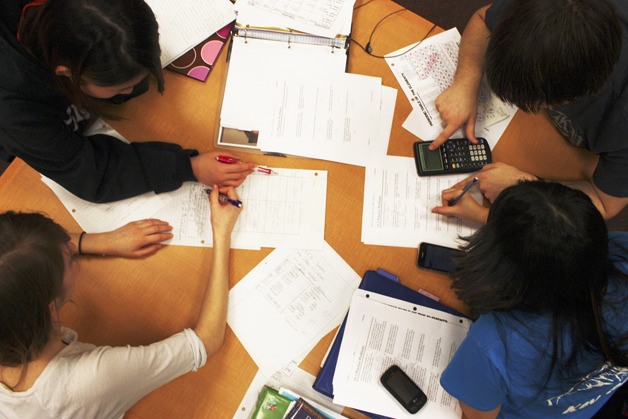Call it innovation, or more fittingly, intervention.
A strategic program is making a difference for students at Auburn Mountainview High School.
It’s called CORE (Count On Reaching Excellence)/Choice, a plan designed to support all students with an emphasis on helping those who struggle in the classroom.
Students receive more personal attention and instructional time during bustling mornings to reconnect with teachers, complete assignments, retake tests, cram for exams, boost grades or catch their breaths.
A 25-minute session, wedged between second and third period four days a week, is set aside to provide students more one-on-one interaction with teachers and tutoring with peers.
Teachers, students and parents are convinced it is a worthy tool. They give it a genuine thumbs-up.
“It’s a wonderful program,” said Chantal Baldacci, an English Language Learners and French teacher. “It raises their grades. It gives them the help they need.”
For some students, CORE/Choice participation determines whether they meet standards, pass or fail a class.
Alarmed at the initial high number of D and F grades students recorded in early 2010, school officials urgently decided to step in. They wanted to exclusively target high apathy, low attendance and additional underperforming pupils, especially among sophomores.
“We were a little shocked at first,” Principal Terri Herren said of the high failure rate. “We needed to do something … and we couldn’t wait.”
Looking for answers, Auburn Mountainview found an applicable intervention program that had worked elsewhere. School leaders decided to adapt to models used successfully at Enumclaw and Tumwater high schools.
“We found it does impact student productivity and success in school,” said Steve DuBay, assistant principal. “We have a segment in our population that does need some intervention, needs some extra time in the day. And it’s not necessarily instructional time, it’s time in which to make up work and consult with a teacher.”
Since the program’s launch last fall, the high number of below-average grades has begun to dwindle.
“It seems to be working. It’s still not perfect,” Herren admitted. “It will be a long process, but we need the kids to know that we care and that we’re here to support them.”
The morning period fits most kids’ schedules.

“We used to try and do after-school tutoring, before-school tutoring, even at-lunch tutoring. It didn’t work,” Herren said. “Kids didn’t wan’t to give up their lunch.”
And many students are occupied with extracurricular activities after school, like club events, music, theater and sports.
Many students can’t stay after school because they need to catch the bus. Others have other responsibilities at home that don’t allow them to stay, Herren said.
CORE students who have a D or an F in any class are assigned back to the same teacher – not just a study hall – to get additional, mandatory support. Class size is usually about 12-14 students. Some are larger.
Choice students, meanwhile, are those who are passing all classes with a C or better grade. They can use the 25-minute period to work on projects, visit friends, turn to computer labs, meet teachers, help students or raise their own scores.
“(Choice students) earn the right to be in the Commons, go to their art or math teacher or go to the library to do homework. You have that choice because you’ve earned that right,” Herren said.
Choice students often use the time for personal needs, serve as peer mentors, attend labs or seminars, apply for colleges, even eat the forgotten breakfast.
The program offers more options, rewards hard work and high expectations, and motivates others while promoting student accountability. Students are monitored through frequent grading cycles.
Failure is not an option, school officials say.
Attendance is up, and discipline problems are down.
Feedback has been positive. The school’s computer lab and library are full.
“It’s like catch-up,” said Heena Kumar, a junior. “I use the extra time to prepare. You see, I have a Spanish test coming up.”
======
INSET PHOTO: Anna Velit, right, helps Julia Cherneychuk with an assignment in U.S. History in the computer lab at Auburn Mountainview. MARK KLAAS, Auburn Reporter

